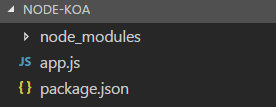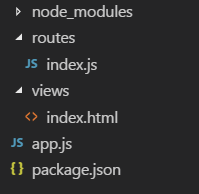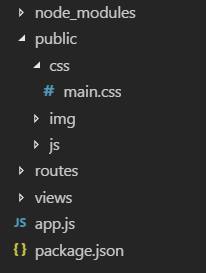您好,登錄后才能下訂單哦!
您好,登錄后才能下訂單哦!
Koa 是由 Express 原班人馬打造的超輕量服務端框架
與 Express 相比,除了自由度更高,可以自行引入中間件之外,更重要的是使用了 ES6 + async,從而避免了回調地獄
不過也是因為代碼升級,所以 Koa2 需要 v7.60 以上的 node.js 環境
手動創建一個項目目錄,然后快速生成一個 package.json 文件
npm init -y
npm install koa -S
// app.js
const Koa = require('koa');
const app = new Koa();
app.use(async ctx => {
ctx.body = 'Wise Wrong';
});
app.listen(3000);

一個最基礎的 koa 應用就這樣完成了

可以執行 npm start 并在瀏覽器訪問 http://localhost:3000/ 查看效果
如果覺得手動創建項目太過繁瑣,可以使用腳手架 koa-generato 來生成項目
npm install koa-generator -g
koa2 project_name
如果是剛接觸 koa,建議先看完這篇博客,再使用腳手架工具,這樣能更好的理解各個依賴包的作用
上面 app.js 中有一個 ctx,這是一個 Koa 提供的 Context 對象,封裝了 request 和 response
每一次 HTTP Request 都會創建一個 Context 對象
我們可以通過 Context.request.path 來獲取用戶請求的路徑,然后通過 Context.response.body 給用戶發送內容
Koa 默認的返回類型是 text/plain,如果要返回一個 html 文件(或者一個模塊文件),就需要修改 Context.response.type
另外,Context.response 可以簡寫,比如 Context.response.type 簡寫為 Context.type,Context.response.body 簡寫為 Context.type
在項目下創建一個存放 html 文件的目錄 views,并在該目錄下創建一個 index.html,然后修改 app.js
// app.js// 原生路由
const Koa = require('koa');
const fs = require('fs');
const app = new Koa();
app.use(async (ctx, next) => {
if (ctx.request.path === '/index') {
ctx.type = 'text/html';
ctx.body = fs.createReadStream('./views/index.html');
} else {
await next();
}
});
app.listen(3000);
這樣處理 url 顯得特別笨拙,所以我們需要引入路由中間件 koa-router
npm install koa-router -S
const router = require('koa-router')();
const koaRouter = require('koa-router');
const router = koaRouter();

// routes/index.js
const fs = require('fs');
const router = require('koa-router')()
router.get('/index', async (ctx, next) => {
ctx.type = 'text/html';
ctx.body = fs.createReadStream('./views/index.html');
});
module.exports = router
// router.prefix('/about')
修改 app.js
// app.js
const Koa = require('koa');
const app = new Koa();
const index = require('./routes/index')
app.use(index.routes(), index.allowedMethods())
app.listen(3000);
另外,還可以在 url 中添加變量,然后通過 Context.params.name 訪問
router.get('/about/:name', async (ctx, next) => {
ctx.body = `I am ${ctx.params.name}!`;
});
在上面的 index.html 中,如果需要引入 css 等靜態資源,就需要用到 koa-static
npm install koa-static -S

然后在 app.js 中添加以下代碼
const static = require('koa-static');
// 將 public 目錄設置為靜態資源目錄
const main = static(__dirname + '/public');
app.use(main);
app.use(require('koa-static')(__dirname + '/public'));

上面的路由是使用 fs 模塊直接讀取 html 文件
開發的時候更推薦使用 koa-views 中間件來渲染頁面
npm install koa-views -S
const views = require('koa-views')
app.use(views(__dirname + '/views'));
// routes/index.js
const router = require('koa-router')()
router.get('/index', async (ctx, next) => {
await ctx.render('index');
});
module.exports = router
app.use(views(__dirname + '/views', {
extension: 'pug' // 以 pug 模版為例
}))
如果將 Express 看作 webstorm,那么 Koa 就是 sublime
當 Express 流行的時候,其冗雜的依賴項被很多開發者所詬病
所以 Express 團隊將 Express 拆卸得只剩下最基本的骨架,讓開發者自行組裝,這就是 Koa
正如文中所說,從零開始太過繁瑣,可以使用腳手架 koa-generato 來快速開發
不過我更推薦,在熟悉了 Koa 之后,搭一個適合自己項目的腳手架
不然為何不直接用 Express 呢
我想這也是 Koa 的官方文檔中沒有提到 generato 工具的原因吧
免責聲明:本站發布的內容(圖片、視頻和文字)以原創、轉載和分享為主,文章觀點不代表本網站立場,如果涉及侵權請聯系站長郵箱:is@yisu.com進行舉報,并提供相關證據,一經查實,將立刻刪除涉嫌侵權內容。